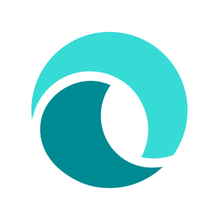How I Solved My Own Problem And Turned It Into A Side Business
Note: This business is no longer running. It was started in 2018 and ended in 2023. Reason for closure: Shut down.
Hello! Who are you and what business did you start?
I am Aidan Breen. I’m an entrepreneur, musician and generally creative person from the west of Ireland. I run a company called APB Software and Hardware Ltd which I started while doing my PhD.
I started the company 5 years ago to learn about how a real company works from the trenches. I started with zero experience, and only a couple of side-projects while I was completing my studies.
Now, it has grown to be my full-time job. Posture is the flagship ‘hardware’ product, which supports my other role as a software consultant.
Posture is a portable laptop stand for home, office and hotdesk. It’s super lightweight, and folds away to fit in any backpack or briefcase. Posture helps prevent neck and back pain by raising your laptop screen, allowing you to sit upright as you work, straightening your neck and relieving pressure on neck and back muscles.
Most importantly, at €39.99 (with free worldwide shipping), Posture is a fraction of the cost of competing portable laptop stands.

Download the report and join our email newsletter packed with business ideas and money-making opportunities, backed by real-life case studies.

Download the report and join our email newsletter packed with business ideas and money-making opportunities, backed by real-life case studies.

Download the report and join our email newsletter packed with business ideas and money-making opportunities, backed by real-life case studies.

Download the report and join our email newsletter packed with business ideas and money-making opportunities, backed by real-life case studies.

Download the report and join our email newsletter packed with business ideas and money-making opportunities, backed by real-life case studies.

Download the report and join our email newsletter packed with business ideas and money-making opportunities, backed by real-life case studies.

Download the report and join our email newsletter packed with business ideas and money-making opportunities, backed by real-life case studies.

Download the report and join our email newsletter packed with business ideas and money-making opportunities, backed by real-life case studies.












